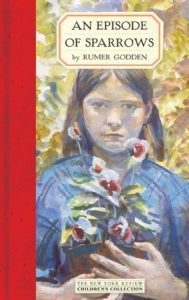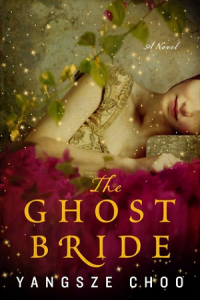Rachel Neumeier's Blog, page 270
April 24, 2017
Possibly the most magical photo ever
Frans de Waal posted this on Facebook recently and I finally remembered to go find it. I may make it the background on my computer forever.
This image, by Ben Hall Photography, shows flamingos soaring through the Chilean Andes.
Please Feel Free to Share:









Ex-classics: when classics are forgotten
Here’s an interesting post that I gather was pulled together from a reddit thread: These Books Were Once Considered “Classics” But Are Now Largely Forgotten
Neat idea for a post! Let’s see what’s on the list:
Telemachus by Francois de Fenelon — evidently a retelling of Ulysses from Telemachus’ point of view. That is an interesting idea, but I don’t know that I would rush right out.
Of Human Bondage by W. Somerset Maugham. That one I’ve heard of. Doesn’t sound like my kind of thing at all. “follows orphan Philip on a bildungsroman through Europe.” — yeah, no, not a very appealing description.
The Magnificent Ambersons by Booth Tarkington, “follows the decline of the superrich Ambersons in the wake of the Industrial Revolution.” Ugh.
Scaramouche by Rafael Sabatini. Now, that one I actually have on my TBR pile. I will have to overcome my ingrained distrust of anything labeled a “classic” in order to read it, and so far that hasn’t happened. The first line is almost as famous as “It is a truth universally acknowledged” or “Call me Ishmael.” Probably you know it, right? “He was born with a gift of laughter and a sense that the world was mad.”
The Moonstone by Wilkie Collins. I faintly remember having heard of this one, which actually sounds quite inviting. “One would think, in creating what is believed to be the first modern English detective novel, you would solidify your place among the literary greats; that seemingly is not the case for Wilkie Collins, whose 1868 epistolary novel The Moonstone pioneered a new genre.” I like English detective novels and I like epistolary novels, so I guess I should look into getting this one. … Yes, it seems to be free for Kindle. Okay then, added to the TBR pile.
Star Maker by Olaf Stapledon. Well, well. That one I’ve not only heard of, I think I read it. A while ago, though. I don’t remember it well, but yeah. I don’t really like the “blending into the cosmic mind” type of outcome.
Rope by Patrick Hamilton. Well, that is certainly a forgettable title that probably did not do the book any favors. Looks like it was a play, and it is described thus: “[a] Dickensian” portrayal of British street culture amid the World Wars.” Hmm. I think I would rather just read something by Dickens.
Okay, that’s it on the list. Anything you would like to add? I’ll include one that may never have been a classic, but should have been: An Episode of Sparrows by Rumer Godden, published in 1956.
Practically any of Godden’s work ought to have been a classic, and should still be read today. My personal favorite is actually In This House of Brede.
Please Feel Free to Share:









April 22, 2017
Didn’t see that coming
So, on Facebook, I followed a link to a post titled I ATE THREE EGGS EVERY SINGLE MORNING FOR A WEEK – HERE’S WHAT HAPPENED.
The resulting post started in a predictable fashion:
It’s the offseason around these parts, and one of the essential things we do every offseason is revisit our diet and exercise. Healthy living and careful planning in April helps us balance out those fall Saturdays, where we often wake up covered in Taki crumbs and high-ABV craft beer cans at 3am, having fallen asleep during an Oregon State late game.
One of my biggest problems in the morning is eating a quick, healthy breakfast that doesn’t leave me starving and raiding the candy jar by 10am. The solution might be a familiar one: inexpensive, easy-to-prepare, protein-packed eggs! I decided to commit to eating them every single morning for a week, forgoing my usual oatmeal, smoothie, or gas station burrito.
Here’s what happened!
MONDAY
Over the weekend, I picked up some farm-fresh eggs from the stand at the local market. Sure, they’re a little more expensive than the grocery store, but the bright yellow yolks have a richer, delicious flavor, and it’s nice to know they’re sustainably raised.
I started simple, and cooked them over-medium, with just a sprinkling of black pepper and minced chives, serving it over sprouted bread with half an avocado.
Bored yet? Don’t be fooled! Click through and keep going, trust me on this. The situation escalates quickly after Monday.
Please Feel Free to Share:









April 21, 2017
Write from your best self
Here’s a post that I just stumbled across, though it’s from a couple years ago, by the well-known agent Donald Maass.
In manuscripts I meet many protagonists who are sour, snarky, bemused, self-pitying, singly-focused, disconnected or, frankly, just plain dull. This would seem to fit the framework which says that protagonists should be yearning, obsessed, suffering, isolated and in need of change.
It also means spending time with people who are a drag. Even more, these authors are promising their readers that their every new title will be a slog. The spirit of their fiction is negative. Many would say “redemptive”, since everything comes out great at the end, but the far off outcome isn’t the point. It’s the experience of reading that can either be burdensome or inspiring. It can engage readers’ hearts or turn them off.
The solution isn’t necessarily creating characters who are relentlessly chipper and nothing but fun, though that might be a relief. Yearning, need, struggle and change are essential to good story, yet all of that can be accomplished in a spirit that invites us in more than makes us run screaming. The difference lies in how you, the author, feel about your characters, the story world and everything in general, and how that finds expression on the page. You are what you eat. In the same way what you write is you.
I think this is an interesting and possibly useful restatement of the “likable character” argument. It gets at why that term, “likable,” doesn’t work for me — and I know doesn’t work for many other people as well. It’s interesting to me that Maass says it’s not necessary to create characters who are relentlessly chipper — as far as I’m concerned, relentlessly chipper is not implied in any way by “not a slog to be around.”
Think of . . . of course . . . Tremaine from Martha Wells’ Fall of Ile-Rien trilogy. She is introspective, suffering, and isolated, but she is not a drag for the reader to be around because she is also witty, practical, competent, generous, and ruthless — a wonderful and unusual spectrum of characteristics that make her unique. Also, likable even though she is not chipper or stereotypically nice or whatever it is that critics mean when they use the word “likable.”
I think that this idea that the author’s general worldview infuses her work . . . yeah, that seems inevitable, doesn’t it? It’s true, I think. That’s why there are certain authors whose fiction I avoid because their every blog post seems like a scream of primal rage. I don’t want to spend time in an anger-soaked world, or with characters born from that world and that worldview.
Maass offers suggestions for, as he says, helping your magnanimous self shine on the page. It’s a longish list, but I will excerpt one little bit:
Who in the story can rise above a situation? Who can forgive when forgiveness isn’t earned? Who is high who can show humility? Who is low who can muster dignity? Who can open their home? Who can impose tough love? Who can sacrifice? Who can inspire? Who can admit wrong? Who can show love when damnation is deserved?
Okay, and one more:
Pick any page in your manuscript. What’s happening? Who in this scene can act more noble, strong, just, fine, generous, loyal, or principled?
As you might guess, I would be drawn to stories written by an author who asked these questions while writing; far more so than to fiction suffused in nihilism, despair, hopelessness, or so on. I get that some authors find that bleakness in the real world and pour it into their stories. I sort of understand that. I also know that some readers enjoy the resulting stories. That, I don’t understand at all.
Click through to read the whole post if you’ve got a minute.
Please Feel Free to Share:









April 20, 2017
Old Houses and New Beginnings
Here’s a recent post at Fantasy Book Cafe: Old Houses and New Beginnings by Yangsze Choo.
Yangsze Choo wrote The Ghost Bride, which I haven’t read because it sounds like it is probably tragic in a sloooow motion everything slowly goes terribly wrong kind of way, which is a very difficult sort of thing for me to read. The cover is lovely, though:
Here’s what is says about this book on Goodreads:
Li Lan, the daughter of a genteel but bankrupt family, has few prospects. But fate intervenes when she receives an unusual proposal from the wealthy and powerful Lim family. They want her to become a ghost bride for the family’s only son, who recently died under mysterious circumstances. Rarely practiced, a traditional ghost marriage is used to placate a restless spirit. Such a union would guarantee Li Lan a home for the rest of her days, but at a terrible price.
After an ominous visit to the opulent Lim mansion, Li Lan finds herself haunted not only by her ghostly would-be suitor, but also by her desire for the Lim’s handsome new heir, Tian Bai. Night after night, she is drawn into the shadowy parallel world of the Chinese afterlife, with its ghost cities, paper funeral offerings, vengeful spirits and monstrous bureaucracy—including the mysterious Er Lang, a charming but unpredictable guardian spirit. Li Lan must uncover the Lim family’s darkest secrets—and the truth about her own family—before she is trapped in this ghostly world forever.
I don’t know, maybe this doesn’t sound like a slow-motion tragedy after all. Actually, it sounds like a Gothic, where we expect all the haunting parts to lead to a satisfying outcome for the protagonist. Has anyone read this? I think I actually have it on my TBR pile, but should I shuffle it more toward the top?
Anyway, old houses. In this post, Choo says:
I’m planning a research trip to Dalian, a city in the part of northern China previously known as Manchuria. “What will you do there?” asked a friend. I had to reply that I wasn’t quite sure, but my main purpose was to wander around and look at old buildings from the early 1900s. … Old houses hint at stories and secrets; their rooms capture the fleeting impressions of feet that have worn down wooden stairs and hands that have polished banisters. When I wrote my first book, The Ghost Bride, I was inspired by a Chinese house in Penang, Malaysia, that had fallen into disrepair. Built by a wealthy Chinese merchant to house his extended family and consisting of courtyards and rooms upon rooms, it was like a tightly constrained world. I could almost feel the weight of family obligation—very helpful when writing the tale of a young woman who is asked to marry a dead man! The decay of the house also suggested the parts of the book which take place in the Chinese world of the dead.
I have to say, Choo is doing a wonderful job at capturing atmosphere in this post. The whole thing is worth reading. Plus, this:
My second novel, The Night Tiger, is about an eleven-year-old Chinese houseboy who suspects that his master is actually a man-eating tiger.
Wow. My first impulse is to grab the book and my second is to back away from it slowly. My third (which I will follow when the book comes out) is to look it up on Goodreads and read some reviews. These do sound very much like Chinese Gothics, if there is such a category. I can really get into a creepy, haunted, atmospheric Gothic story … if it is not also a grim story where the protagonist slowly descends into inescapable tragedy.
Please Feel Free to Share:









April 19, 2017
Even I might watch that
Via File 770, I see that Maggie Stiefvater’s Raven King quadrilogy has been picked up for a tv series.
I do think this comment, by River, is on point:
Maggie Stiefvater’s writing style was essential to the tone of the series. I can’t see that translating well on television.
Personally, though I enjoyed Cabeswater immensely, it is the characters I think about when anyone brings up the series. They are so precious to me that any cast will inevitably disappoint me.
I feel like I am being a Negative Nancy here but I can’t stress enough how big a role the author’s particular writing played in why the series is so loved.
It is indeed Stiefvater’s beautiful writing that hooked me. No question about it. And she puts us in the heads of her characters, always a challenge for visual media. Also, I have a really clear picture of Ronan. Not so much of the others. But I could see casting either working for me or totally not working for me depending on the actor cast as Ronan.
Still, I will be very interested to see how a miniseries is handled.
Please Feel Free to Share:









April 18, 2017
The new World Fantasy award
Have you seen the new award for World Fantasy?
I pretty much like it, though I regret that there is no dragon. I’m glad whoever was involved in choosing the design steered clear of representations of any writers, living or dead. Using a person’s head would have pretty obviously been a terrible idea, no matter who was chosen. A tree with a full moon — even with no dragon! — should be far less controversial.
The “note on the design” at the WF site adds:
Trees bestride fantasy literature, from Roger Zelazny’s The Chronicles of Amber to Robert Holdstock’s WFA-winning Mythago Wood cycle, C.S. Lewis’ Narnia chronicles to Michael Sullivan’s Age of Myth cycle, the godswoods of Westeros in George R.R. Martin’s A Song of Ice and Fire, J.R.R. Tolkien’s Ents and Enid Blyton’s Magical Faraway Tree.
But not all trees are nurturing: it’s the treatment of a Chora sapling which begins a bloody war in Jordan’s books. Tolkien’s Mirkwood is as evil as its denizens and Weasels and Stoats rampage around Kenneth Grahame’s Wild Wood; J.K. Rowling’s Whomping Willow has terrified millions, while Patrick Rothfuss’ Cthaeh, lurk unseen in the branches of a giant tree in the fae realm. There’s the baobab tree in Antoine de Saint-Exupéry’s The Little Prince, Ray Bradbury’s The October Tree, the apple tree in The Wizard of Oz, and many more.
Vincent Villafranca has encapsulated the worlds of fantasy in the branches of our new award, and we thank him.
This is all well and good, but I still would like a dragon.
Please Feel Free to Share:









Lowering the goal posts
Here’s a post from Stephanie Burgis that I read a couple weeks ago: Lowering the goal posts.
I’m grateful I was never a total overachiever. I mean, sure, I went through grad school in a state of low-key simmering guilt because there was always something I should have been working on . . . come to think of it, being a writer is a bit like that too.
Which is why it helps, when you are plainly not going to manage a goal you had planned, to lower the goalposts. A little tiny bit of guilt is fine. It’s motivating, probably. But no one needs to live their whole life feeling like a failure.
Here’s the quote that made me laugh:
[My counsellor] asked me how I set my work-goals each month.
I said, “Well, I figure out how long I have until my next supervision meeting, then I figure out exactly how much I could get done if I work REALLY REALLY hard every day until then – and then I set that as my goal.”
…Then, of course, I got incredibly stressed as I neared the date of my next supervision session, realized how unforgivably, shockingly behind I was, and drove myself to the edge of burn-out (or beyond) desperately trying to hit that goal, every time.
This was something that, by now, my counsellor knew about me. So:
“Hmm,” she said. “Interesting. But…have you ever considered, instead, figuring out exactly how much you could get accomplished if you worked moderately hard on most days and didn’t get anything done on a few other days along the way – and set that as your goal?”
I stared at her, genuinely shocked. “I could do that?”
Talk about a life-changing moment!
This is pretty much how I set goals for myself, too. By planning to work moderately hard most days and completely blow off writing on some days. And by re-stating personal deadlines as needed. Right now, for example, I am working on the third Black Dog book. I really am! But the date I plan to have it completed has changed from January 15th to end-of-March to (now) the-beginning-of-May-probably.
Well, it’ll get done sometime this spring. Before I have a Real Deadline, probably. Though I would certainly hope and expect to have a Real Deadline or two (that is, a new contract, or preferably two) by the end of the year. Or, ideally, before the end of May, though that’s perhaps too optimistic.
Anyway, yeah. For all the workaholics out there: if you’re getting stressed, maybe you should try lowering your personal goalposts a bit and see how that goes!
Please Feel Free to Share:









April 17, 2017
Today, a guest post …
I’ve got a guest post today, over at The Book Smugglers —
Those Early Novels You Haven’t Looked at in Ten Years
Click on over there to take a look!
Please Feel Free to Share:









April 16, 2017
Happy Easter!
I hope you are all having beautiful weather for Easter! We are supposed to have rain, but I’m hoping to make it to the park with some of the dogs.
Whatever the weather, you might enjoy these cookies, which are wonderful for springtime:
Springtime Rose Cookies
2 1/2 C flour
1 tsp baking soda
3/4 tsp salt
2/3 C buttermilk
1 tsp vanilla
14 Tbsp unsalted butter,
1 C sugar
2 eggs
Filling:
1/2 stick butter
4 oz cream cheese
8 oz powdered sugar
2 tsp rose water
2 drops red food coloring
Whisk together dry ingredients. Combine buttermilk, egg, and vanilla.
Beat butter and sugar three minutes. Beat in flour mixture and buttermilk mixture alternately, beginning and ending with flour mixture.
If you think that this method is much more like you are making a butter cake than a cookie, you are right! These are the most cake-like cookies you can possibly make. They work perfectly with the filling, believe me.
Now, you can drop the cookie dough on parchment-lined baking sheets, but I STRONGLY SUGGEST piping the dough, which is MUCH faster and easier and gives you a lot more control over the size of the cookies, plue ensures they come out round. Make ’em small, like a tsp each.
Bake at 350 degrees for 6-8 minutes, until just barely brown around edges — you don’t want to overbake them.
Now combine the filling ingredients. Pipe the filling on half the cookies and top with the other half to make sandwich cookies.
These freeze beautifully, but because the cookies are so soft, you will find they stick to each other. Put waxed paper between layers.
If you have filling left over, ice cupcakes with it. In fact, if you make twice the filling, you’ll have enough to ice a whole layer cake! Mmmm.
If you don’t want to go to the trouble of making cake, I have to add that the extra filling is great on biscuits or scones.
Please Feel Free to Share:

















